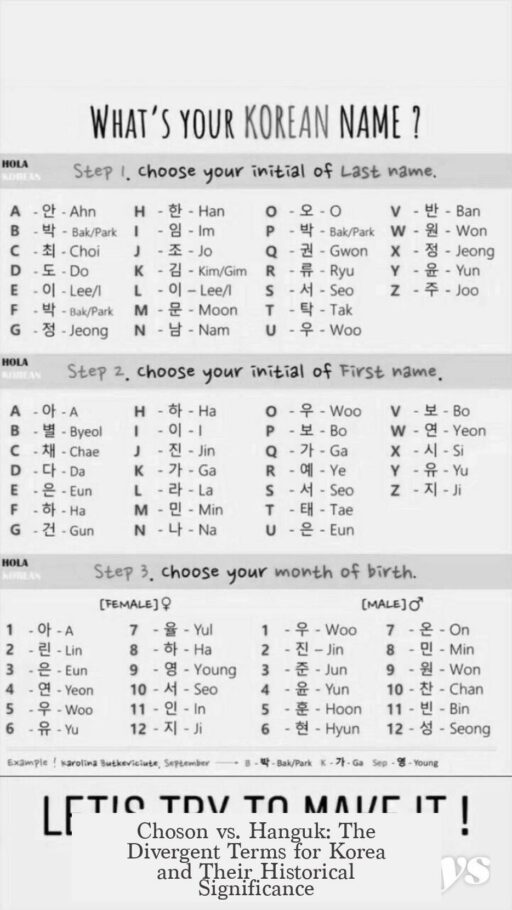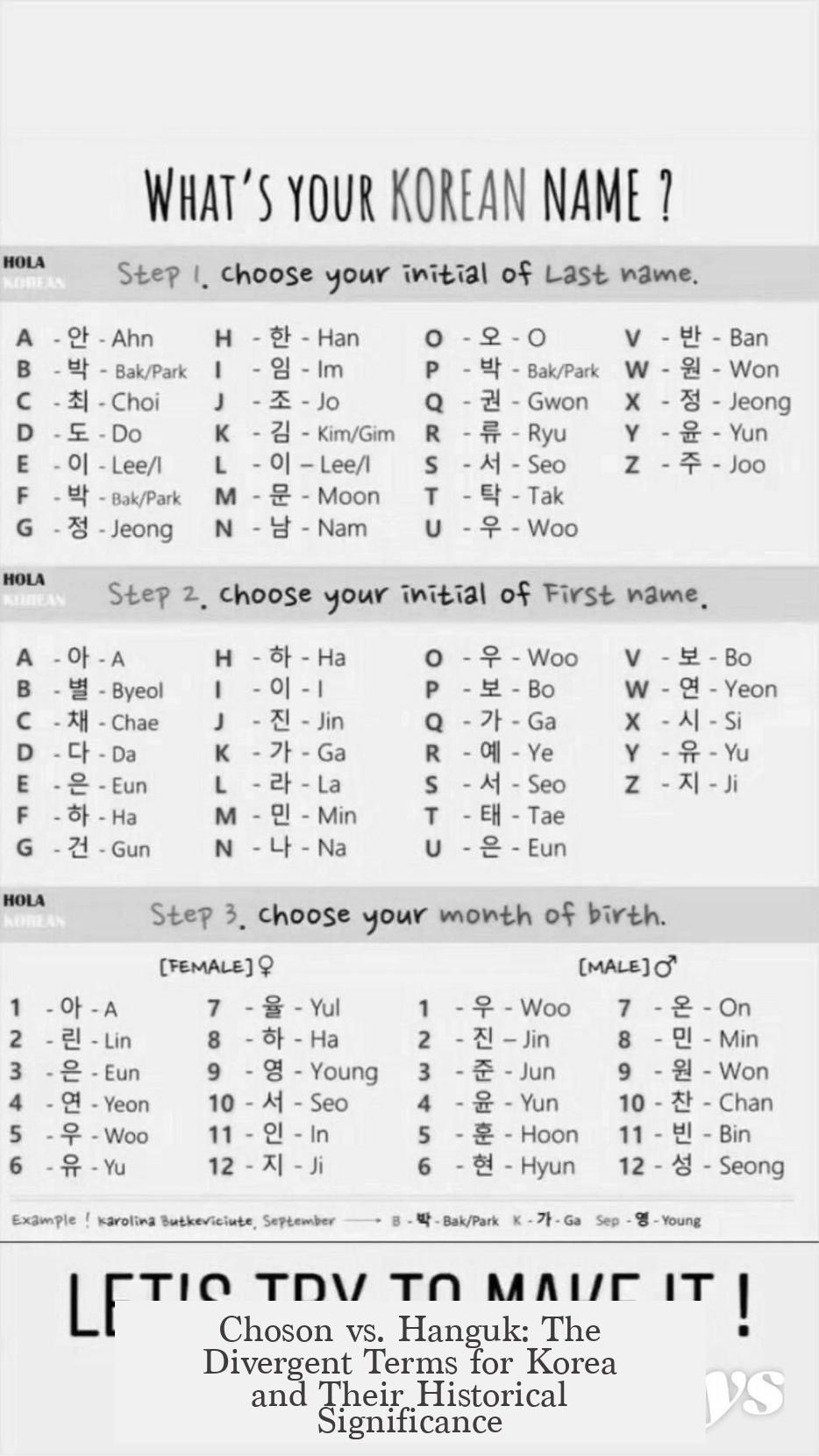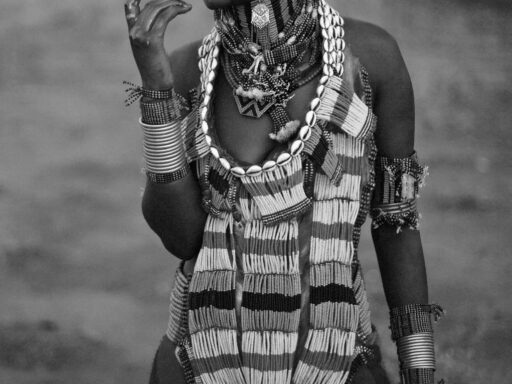North and South Korea use different terms—“Choson” (Joseon) and “Hanguk”—to refer to Korea as a whole due to historical continuity and political legitimacy claims stemming from divergent developments after World War II.
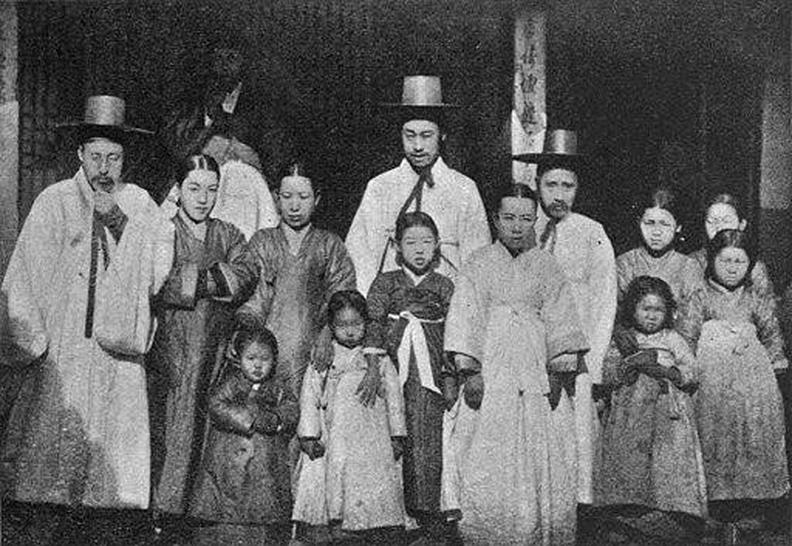
Originally, “Choson” or “Joseon” referred to historical Korean states. The first was Gojoseon, existing in Manchuria and the Korean peninsula until 108 BC. Later, the more familiar Joseon dynasty (1392–1910) solidified the use of this name. Even after Japan’s annexation of Korea in 1910, “Joseon” commonly denoted the Korean land and people.
Meanwhile, “Hanguk” is a shortened form of “Daehan Minguk” (Republic of the Great Han People), referring to the peninsula’s people descending from the Samhan kingdoms. These “three hans” were post-Gojoseon realms that used “Han” in their names, establishing a separate identity from Joseon. The term “Daehan Minguk” was adopted by the Korean Provisional Government in exile in 1919, during Japanese rule. It was part of efforts to unify Koreans under a new national identity and sovereignty.
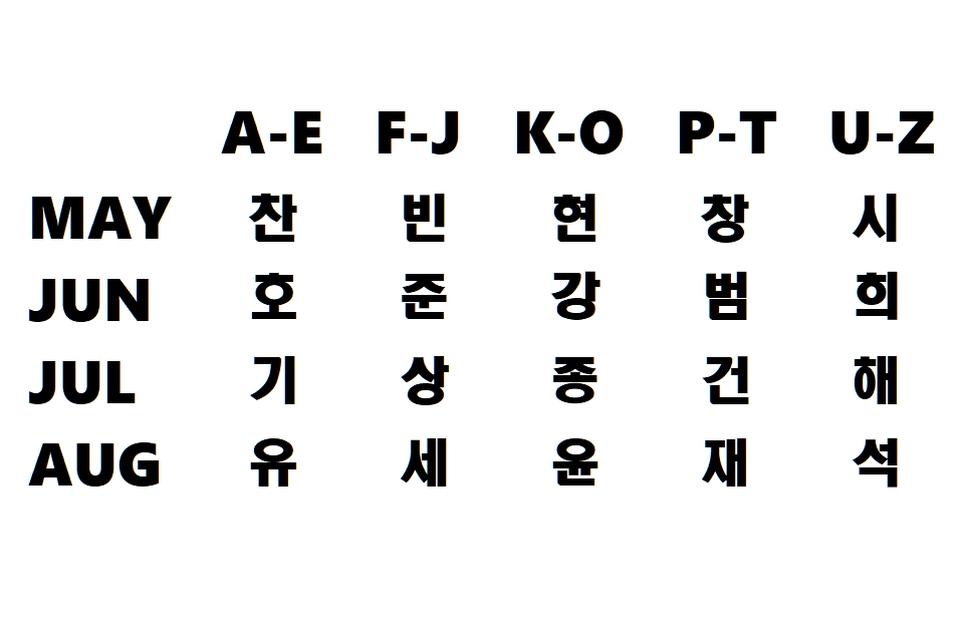
When World War II ended, Korea divided along Soviet and American occupation lines. This geopolitical shift pushed North and South Korea onto different paths in terms of national naming conventions:
- South Korea continued to use “Daehan Minguk” as its official name, reflecting the Provisional Government’s legacy. This name, often shortened to “Hanguk,” emphasizes the “Han” identity linked to the ancient Samhan realms. It symbolized political continuity from the independence movement and claimed to represent all Koreans. In daily speech, “Hanguk” means Korea within South Korea.
- South Koreans refer to North Korea as “Bukhan” (North Han), underlining the peninsula’s division through the “Han” framework.
- “Joseon” in South Korea typically relates to the historical dynasty or the Korean ethnic minority in China (“Joseonjok”). Its use to describe the current Korean land or people is rare in the South.
- North Korea rejected the name “Daehan Minguk” due to its association with the South Korean government, which North Korea did not recognize as legitimate. Instead, it retained “Choson,” consistent with the historical kingdom name. This continuity reflected an ideological stance anchored in Korean history and a refusal to accept the South’s political framework.
- North Korea uses “Namjoson” (South Joseon) to refer to South Korea, reinforcing its narrative of division and separation.
- Interestingly, North Korean media rarely uses “Daehan Minguk.” One notable exception was during peace talks on loudspeaker broadcasts, when the term was temporarily employed as a signal of willingness to negotiate, showing the political weight the terms carry.
These different choices stem from contrasting political histories and identities. South Korea’s use of “Hanguk” links to the independence movement’s national identity, emphasizing a legacy that claims jurisdiction over all Korean people. North Korea’s adherence to “Choson” connects to historical roots and rejects the South’s government as illegitimate.
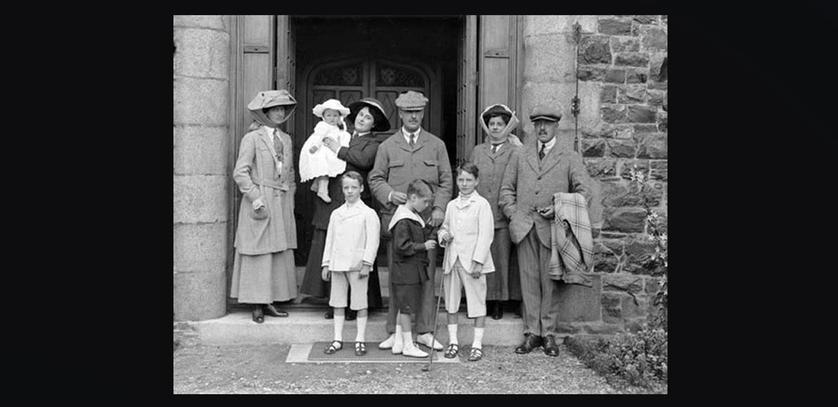
| Aspect | South Korea | North Korea |
|---|---|---|
| Official Name | Daehan Minguk (Republic of Korea) | Choson Minjujuui Inmin Konghwaguk (Democratic People’s Republic of Korea) |
| Common Term for Korea | Hanguk | Choson |
| Term for Opposite Korea | Bukhan (North Han) | Namjoson (South Joseon) |
| Historical Reference | Samhan identity; Provisional Government legacy | Joseon dynasty and Gojoseon continuity |
| Political Meaning | Claims legitimacy over entire Korean peninsula | Rejects South Korean state’s legitimacy |
The split’s roots also lie deeper. The Provisional Government, created in 1919 during Japanese occupation, inspired the South’s official name but was sidelined post-WWII, especially by American authorities. The South Korean government formed under American influence did not fully align with the Provisional Government, despite using the same name. Kim Gu, a Provisional Government leader, expressed frustration at this sidelining.
In the North, different communist groups existed, but Kim Il Sung’s faction refused to recognize the Provisional Government umbrella, continuing to use “Joseon” and rejecting the term “Daehan Minguk” outright as representing an illegitimate Southern regime.
This divergence has implications beyond naming. When North Korea uses “Daehan Minguk” instead of “Namjoson,” it signals a rare intent for dialogue or negotiation, showing how terminology reflects political stance. The terminology used in official discourse, news media, and everyday speech subtly reveals the stance on legitimacy and national identity each state holds.
- “Choson” emphasizes historical continuity and denial of the South’s legitimacy.
- “Hanguk” stresses modern nationalism linked to the independence movement and claims all-Korean representation.
- Terms for the opposing state (“Bukhan” vs “Namjoson”) reflect rhetorical framing grounded in these narratives.
These linguistic differences illustrate more than historical naming conventions; they reveal the complex political and ideological rift between North and South Korea. The terms chosen embody contrasting identities shaped by history, conflict, and legitimacy battles that persist today.
Key takeaways:
- “Choson” is rooted in ancient and dynasty-era Korean history; North Korea retains this term.
- “Hanguk” derives from the Samhan kingdoms’ legacy; South Korea uses it as a modern national identity.
- Post-WWII division solidified different naming linked to each state’s political claims and legitimacy.
- Terms for the opposing state reflect each side’s political stance and recognition—or lack thereof.
- Political signals, such as North Korea’s rare use of “Daehan Minguk,” illustrate the power of language in diplomacy.
North and South Korea’s Terms for Korea as a Whole: Choson and Hanguk — How Did They End Up Using Different Terms?
Ever wondered why North Koreans proudly say “Choson” while South Koreans are all about “Hanguk”? It’s more than just a simple linguistic divergence; it’s a tale packed with centuries of history, political drama, and identity battles. So, why did North and South Korea end up calling the same country by two very different names? Let’s dive deep — no passport required.
Where It All Began: The Historical Roots of “Choson” and “Hanguk”
The story starts far back in time, long before the division of Korea. The term Choson (or Joseon) isn’t just a random label but a name steeped in history. It originally referred to the first Joseon kingdom, which existed on the Korean peninsula and parts of Manchuria until 108 BC. Think of it as the Korean “OG kingdom.” Later, the more famous Yi Joseon dynasty, which lasted from 1392 to 1910, also bore this name.
The name Joseon survived beyond 1910, continuing to denote Korea as a whole — the land, the people, the cultural heartbeat. Not surprising that North Korea, as a state deeply rooted in tradition and history, clings to this term like a badge of honor.
On the other hand, Hanguk is a shortened form of Dae Han Min Guk, meaning roughly “Great Han People’s Nation.” Here, “Han” isn’t about the Chinese Han (often a point of confusion!). Instead, it references ancient Korean peoples—the “SamHan” confederacies known from the historical period after GoJoseon’s fall. In essence, “Han” is very Korean, very local, and deeply tied to identity.
The 1919 Provisional Government and the Birth of Hanguk
Why did “Hanguk” become a thing? We can give credit to the Provisional Government of Korea established in 1919 during Japanese colonial rule. They officially rolled out the name Dae Han Min Guk as the symbol of the Korean people’s sovereign identity and drafted a constitution under this name.
But here’s the interesting twist: even as “Hanguk” was coined in official circles, the ordinary folks kept saying “Joseon” in casual chats. This explains how two names stayed alive side-by-side well before the peninsula divided—a bit like a bilingual country, but without the official language policies.
WWII, Occupations, and the Terms’ Split
The split into North and South Korea after WWII is where their name choices became firmly polarized. When the Soviets occupied the North and the Americans the South, things got complicated.
South Korea: The newly forming southern government kept using Dae Han Min Guk (ROK) to assert itself as the rightful government representing all Koreans. “Hanguk” became the everyday term for Korea in the south, signaling continuity with the 1919 Provisional Government’s ideals.
Interestingly, some confusion lingers because this provisional government was largely sidelined by American authorities. Take Kim Gu, a provisional government leader, who reportedly threatened suicide because he felt betrayed. So, while the name survived, the political connections were shaky.
For northern folks, the southern “Joseon” refers to the old Yi Joseon dynasty or even ethnic Koreans in China as “Joseon-jok”. When South Koreans talk about the “North,” they say “Buk Han“—literally, “North Han.”
North Korea: The North took the historical route, sticking with Joseon. Kim Il-Sung’s regime rejected the authority of the southern government. They didn’t claim lineage from the provisional government but rooted their legitimacy in the classic name.
For North Koreans, southern Korea is called “Nam Joseon” (South Joseon). News broadcasts frequently use this term, reinforcing the north’s narrative: they are the original Korea, the true Joseon, and their southern neighbors are a regional offshoot.
Interestingly, North Korea rarely uses the term Dae Han Min Guk. The one time they did was during tense negotiations aimed at stopping loudspeaker broadcasts from South Korea—an unusual olive branch where language hinted at political willingness to talk.
What Does This Difference Really Mean?
Why fixate on names? Because language here isn’t just words — it’s a battlefield of legitimacy and identity. The North clings to Joseon as a symbol of deep-rooted continuity and rejects the South’s government. The South, meanwhile, embraced the provisional government’s name to assert an identity connected to recent history and a modern nationhood claim.
In a nutshell: North Korea’s Joseon is historical tradition and political rejection of the South’s system. South Korea’s Hanguk underlines a national identity born from the struggle against Japanese colonization and the birth of a new government.
Even today, when you hear these names, you’re getting more than just history—you’re catching a glimpse of ongoing politics.
Why Should You Care About This Naming Thing?
You might think, “It’s just names.” But these terms reveal the psychic map North and South Koreans draw for themselves. The name you use can signal political allegiance, cultural heritage, or even an opening to dialogue.
For example, North Korea’s rare use of Dae Han Min Guk during talks offers an important clue: words become tools of diplomacy. Each term carries weight beyond literal meaning, shaping perceptions and softening or hardening divides.
Comparing the Two Terms: A Quick Table
| Aspect | Choson (Joseon) | Hanguk (Dae Han Min Guk) |
|---|---|---|
| Historical Origin | Old Joseon kingdom(s), notably Yi dynasty (1392-1910) | Derived from SamHan confederacies and 1919 provisional government |
| Use by Today’s Governments | North Korea’s official and colloquial term for country | South Korea’s official and common term for country |
| Political Implication | Represents historic continuity, rejects South Korea’s legitimacy | Claims representation of whole Korean people, linked to modern statehood |
| Term for Other Korea | “Nam Joseon” (South Joseon) | “Buk Han” (North Han) |
Bottom Line
Next time you hear someone mention Joseon or Hanguk, remember you are hearing more than a name. You are listening to centuries of Korean history compressed into a single word. The North’s Choson connects to the past and political defiance, while the South’s Hanguk looks to recent struggles and a modern national identity.
So, don’t just accept the terms at face value. Ask yourself: what does this word say about who Koreans are? How they see themselves? And what future they dream of? If names are windows to identity, consider this a glimpse into the divided soul of the Korean Peninsula.
Are you fascinated by the way language and politics entwine in Korea? What other aspects of Korean culture or history would you love to explore next? Feel free to dive in and curiosity might just lead you to a whole new perspective.
Why does North Korea use “Choson” while South Korea uses “Hanguk” to refer to Korea?
North Korea continues to use “Choson” based on historical kingdoms and rejects South Korea’s government legitimacy. South Korea uses “Hanguk,” linked to the 1919 provisional government and emphasizing a unifying Korean identity.
How did the term “Dae Han Min Guk” originate and influence South Korea’s naming?
“Dae Han Min Guk” means “Republic of the Greater Han People.” It was created by the 1919 provisional government aiming to represent all Koreans. South Korea adopted this as its official name after WWII.
What political message is sent when North Korea uses the term “Dae Han Min Guk”?
North Korea rarely uses “Dae Han Min Guk.” It appears mainly during sensitive diplomatic talks, signaling a willingness to negotiate with South Korea, unlike their usual preference for “Choson.”
Why is “Han” in “Hanguk” different from the Chinese “Han”?
The “Han” in “Hanguk” refers to ancient Korean confederacies called SamHan. It is unrelated to the Chinese Han. This historical reference is key to South Korea’s national identity.
How do North and South Korea refer to each other using these terms?
South Korea calls North Korea “Buk Han” (North Han). North Korea calls South Korea “Nam Joseon” (South Joseon), reflecting their chosen names and political divisions.
